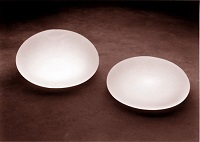
The texture of the implants is seemingly the problem. Over time, the textured surface may cause abrasions that lead to inflammation and spontaneous fluid collection. These abrasions can damage tissue and lead to abnormal cell development. It’s also possible that bacteria may cling to the surface of the implant and create a harmful biofilm.
Raylene Hollrah was told she had ALCL in 2013, six years after undergoing a double mastectomy for breast cancer. When she learned she had cancer again, she feared never seeing her children grow up. The Times tells how the return of the disease into her life was ultimately caused by the reconstructive surgery that rebuilt her chest.
According to Dr. Mark W. Clemens II, a plastic surgeon and expert on ALCL at the University of Texas MD Anderson Cancer Center in Houston, “only about 30 percent of plastic surgeons were routinely discussing the cancer with patients” as of 2015.
Other medical professionals may not be educated on ALCL because it’s incredibly rare. Diagnosis of this type of cancer requires a test for a substance called CD30 which is conducted by collecting and examining fluid. Without a CD30 test, the disease can easily be mistaken for others, and doctors may order rounds of unnecessary chemotherapy and radiation for patients that ultimately cause more harm than good while not treating the underlying problem.
Roughly 400,000 women receive breast implants every year and that number appears to be on the rise. Between 2000 and 2016, breast augmentations rose 37 percent. During the same time, reconstructive surgery after mastectomies rose 39 percent. Compared to the rest of the population, the risk of developing ALCL is 67 times higher for those who receive textured implants versus those who receive smooth implants.
At least 359 cases of lymphoma linked to breast augmentation have been reported to the FDA from around the world. That number is expected to rise as more medical professionals begin to recognize the connection between textured breast implants and cancer, as well as the importance of the test for CD30.
Thankfully, 85 percent of ALCL cases can be treated with surgery alone and the prognosis is positive when the discovery is made early. However, the lack of information on the disease often makes it difficult to know such surgery is necessary. Women who have undergone breast augmentation are encouraged to talk with their doctor about what kind of implants they received and to ask their doctor if he or she is familiar with ALCL and the importance of CD30 testing.
